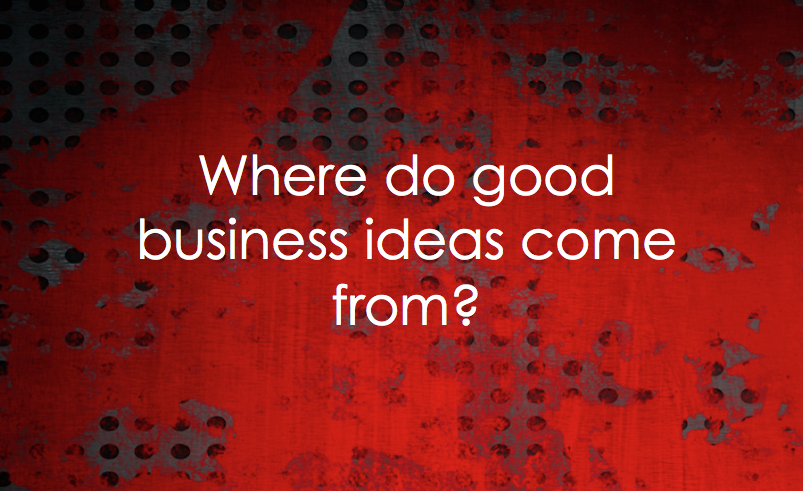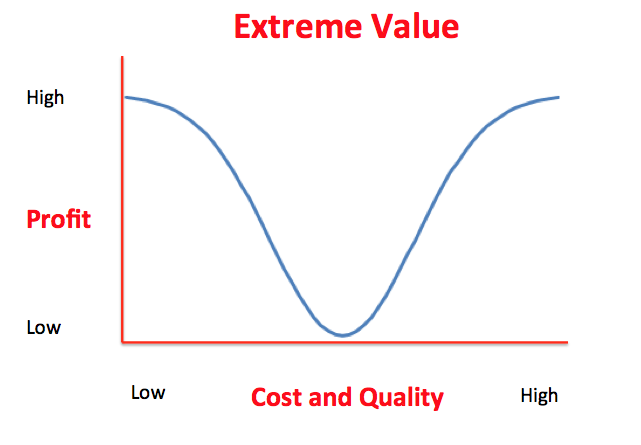by Charles Plant | Jan 21, 2016 | Entrepreneurship

I’m doing a piece of research with U of T that looks at where good business ideas come from and it’s making me look back at some of the very bad business ideas I’ve had over many years. It seems that age doesn’t prevent me from having bad ideas.
Several years ago I decided to try to solve the problem of strategy execution that bedevils many companies. This was a problem that I had had when I was CEO of Synamics. We could come up with strategies (whether they were good or not is another matter) but I felt we fell short in their execution. At the time I wished I had software to help keep track of whether my strategy was being executed effectively or not but I never got around to creating it.
Fast forward a few years and I kept seeing articles, many of them in the Harvard Business Review that reported that strategy execution is the biggest problem in business today. Even polls of CEOs will confirm that strategy execution is their biggest problem. So I figured, this is a problem that I had as a CEO and HBR says that this is the biggest problem in business today, so maybe this is a good idea for a business.
‘They’ say that when you’re starting a business you should look for a problem to solve, not create a product that goes in search of a market. So here I was, trying to solve a well documented problem. But was it successful? No, not even close. I teamed up with Mike Tobias at Mercanix to launch software and services to address problems in strategy execution and we bombed.
And when I say bombed, I mean that we couldn’t even find anyone to talk to. We went out to the market aggressively but met blank stares. I’ve spent some time analyzing what we did wrong and in the process I’ve learned a lot about launching new products. What I discovered when I did the analysis was that there really isn’t a market for what we created. But wait a second, this is documented as the biggest problem in business today but there is no market for a solution?
Well as it turns out, most companies haven’t assigned the generic function of strategy execution to anyone. (If you want to check this out, take a look at how many of your LinkedIn contacts mention strategy execution in their bios. According to my stats there are 100 people doing strategic planning for every one that is doing any strategy execution.) Most companies don’t have any one individual responsible for strategy execution as a job function. Instead they say that everyone is responsible.
So when no one person is responsible for something there is no one looking to buy software and services, even if the problem is the biggest one the company is experiencing. And with no one responsible for buying solutions, there is no one to talk to when you call up a company. So there is no market and you’ve come up with a bad idea.
It’s obviously not enough then, to base a company around a personal need or even around published problems. And if these aren’t enough of a source for an idea, then I’m trying to find out exactly where good ideas come from. The research I’m doing is telling me a lot but I thought I would ask the question in case any of you can add to the conversation. If you have any feedback, let me know. Where have your good business ideas come from?
by Charles Plant | Dec 2, 2015 | Entrepreneurship
 I was thinking the other day about extreme value as a result of reading a blog about which retailers will survive when the middle class is eliminated. You can picture them. They are the Saks, Nordstrom, Tory Burch, Tiffany’s, Versace and John Varvatos of the world.
I was thinking the other day about extreme value as a result of reading a blog about which retailers will survive when the middle class is eliminated. You can picture them. They are the Saks, Nordstrom, Tory Burch, Tiffany’s, Versace and John Varvatos of the world.
While luxury retailing continues to grow , mid-priced retailers are struggling. Abercrombie & Fitch, Aeropostale, American Eagle, Ann Taylor, J. Crew and the Gap as examples of brands which are struggling to differentiate and prosper.
I don’t think that this is particularly due to the loss of a middle class though but of a polarization in business strategy. Product developers and retailers have found that the most money is to be made delivering extreme value. As we get more sophisticated, the tendency is for us as consumers to search out products and services that add value to an extreme degree on one dimension of the quality, cost, speed triangle.
Consumers are tending now to look for extremes in value, sometimes in quality and other times in cost and it really doesn’t matter which socioeconomic group one is in. The best business strategies are exploiting those extremes.
The same thing is occurring in politics. As you look at the US primaries, several candidates on both sides, Trump and Carson for the Republicans and Sanders for the Democrats are exploiting the voter search for extreme value.
Extreme value hiring is also in full force with companies outsourcing to get the lowest cost on one end of the continuum and paying exorbitant salaries for talent on the other end.
This is happening because we have moved from mass marketing to highly differentiated, highly segmented markets. You can differentiate on both ends of the extreme value curve but not in the middle.
So how does this apply to work? Well if you want to be successful, you had better be defining yourself on the talent end of the extreme value curve. If you don’t then you’ll eventually be outsourced as employers will look for extreme value on the cost dimension when faced with an average bunch of prospects.
by Charles Plant | Oct 5, 2015 | Leadership Development, Uncategorized

We’re doing something wrong in promoting gender equality and I think it starts all the way back to how we name babies. We have a patrilineal naming tradition that asserts to a baby girl that her father is more important than her mother. To me this is the beginning of gender inequality.
As my daughter is now expecting my first grandchild and it is to be a girl, I want her to start life thinking that she is just as important as any boy who is born. To do that I’m advocating a new tradition that a girl’s last name be the same as her mother’s last name.
I’ve written an essay that got published in the Globe and Mail today. It explains a new solution to stop gender inequality at birth.
Pass it on and be a part of a new trend towards true gender equality.
Check out the essay here.
by Charles Plant | Sep 11, 2015 | Leadership Development
 One of my faithful readers pointed out a comment I made in my last post about Open Dialogue. It was when I referred to my reluctance to speak up recently about a bonehead move by a co-worker.
One of my faithful readers pointed out a comment I made in my last post about Open Dialogue. It was when I referred to my reluctance to speak up recently about a bonehead move by a co-worker.
He said that in his experience, “Maybe the problem is that boneheaded moves slip by because nobody actually pays attention to boneheads in the first place. The other thing is that some bonehead invited the bonehead to participate in the dialogue, so we’re faced with a self-perpetuating bonehead circle of life.”
And that one comment opened up a whole new window to business behaviour. There are bonehead circles that arise in business when one bonehead hires another one, and then another one, and before long you have a group of boneheads.
If you’re thrust into a circle of these boneheads, it may seem surreal. You might wonder why everyone around you is thinking or acting in such a strange way. This is not quite as bad though as when you start to agree with them or act in the same way. Then you must wonder, have you become a bonehead too?
I think this is what happens over time. You get one or two boneheads in a group and entropy sets in. Sooner or later everyone begins to think and act in the same way and you have a bonehead circle.
That’s when the problems start. Bonehead circles can’t see problems or opportunities. They don’t recognize danger or come up with new, innovative and creative ideas. When you’ve got a bonehead circle no one is able to criticize other members of the circle.
And the inevitable result is like watching a good business get flushed down the toilet, boneheads and all.
by Charles Plant | Sep 8, 2015 | Leadership Development
 I was naughty the other day and am feeling slightly guilty about it. Essentially, I found myself not willing to share my honest opinion and thus breaching all my rules about open dialogue.
I was naughty the other day and am feeling slightly guilty about it. Essentially, I found myself not willing to share my honest opinion and thus breaching all my rules about open dialogue.
I have always said it is better in a startup and in working with a close team that everyone be free to open up, share his or her opinion in a constructive manner and let the chips fall where they may. Honestly and open dialogue being the best policies.
But I have been criticized for being too critical. (What’s with that?) And since I’m constantly trying to remind myself to use more emotional intelligence (not being noted for that skill), I hung back and didn’t share my honest opinion.
This has led me to struggle with trying to figure out the best balance. How do you practice open dialogue but not be seen as being critical when someone is about to pull a totally boneheaded move?
Some people are great with criticism and others totally shy away from it, abhor it. Do you change your behaviour for those who don’t like criticism or do you just let loose and figure it is their problem.
I can hear those of you who are emotional intelligence gurus trying to tell me that you can deliver a critical message in an open manner and not turn the recipient into a quivering pile of goo. But sometimes it is easier just to stop with the open dialogue and shut up.
What I have decided is that we really need a Festivus Pole at work, available every day. It can be used just like during Festivus, for airing of grievances.
That way, if you’re touching the pole you get a complete bye on critical dialogue. And maybe the pole might even make you think best about how to communicate criticisms in a constructive manner.





